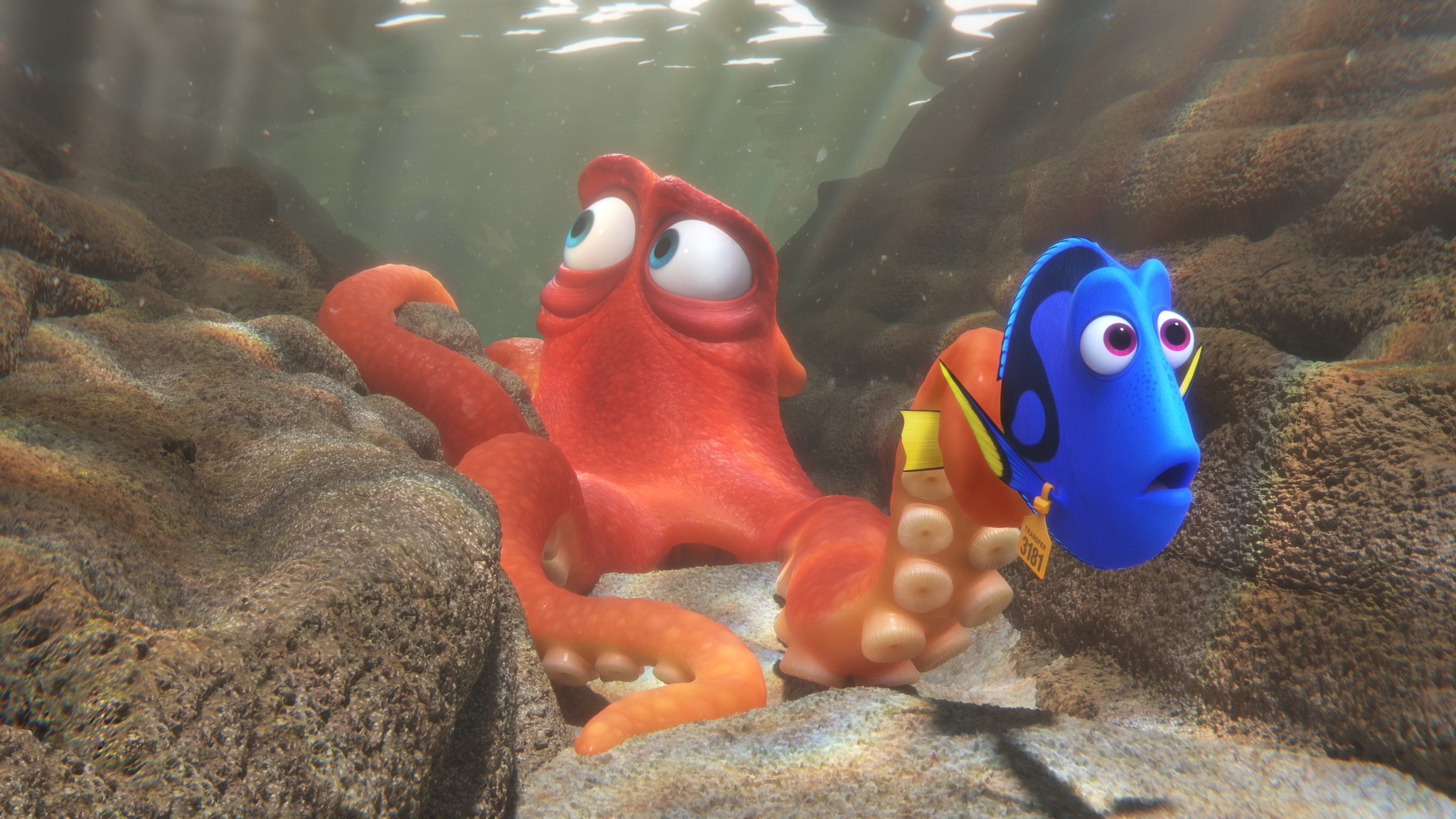If you’re heading to theaters this weekend to see the much anticipated “Finding Dory,” take note of how Mr. Ray glides effortlessly through the water, and grouchy Hank the octopus curls and lifts his tentacles.
It’s no accident these motions look realistic — the animation company Pixar sought expert advice from University of Washington fish biomechanist Adam Summers for its second movie about life under the sea.
Summers, a UW professor of biology and aquatic and fishery sciences who is based at Friday Harbor Laboratories, advised Pixar on ichthyology for the company’s 2003 hit “Finding Nemo.” He did it again for the long-awaited sequel, answering questions about how certain animals swim and move around in the water.
Summers talks about both advising experiences — including the tension between entertainment and science, being corrected by kids and the drama of the piscine world — in a Q&A appearing June 15 in Nature. The journal’s editors also discuss Summers’ work in an editorial arguing that if ocean life is to be preserved, more people must get to know the wonders of the marine world.
Here are some excerpts from Nature’s Q&A:
Summers on his role with Pixar in “Finding Dory”:
“They presented me with a series of interesting characters, and they wanted to know neat things about these animals. For instance, they asked me about beluga whales (Delphinapterus leucas) — and whether the issues around captive individuals were similar to those for killer whales (Orcinus orca). Their questions were less philosophical than for ‘Finding Nemo.’ It was less, ‘Do these things think?’ and, much more, ‘How does it swim?’ …”
On science in the entertainment industry:
“This question is very important for the entertainment industry: Does it matter whether you’re right, when you’re telling a story to entertain? Under some circumstances, I don’t think it matters. But with an animated movie about real, living systems, when you use the truth — their complexity and beauty — as a springboard for the story, you add a level of gravitas that is vitally important to creating a broad and deep appeal …”
On other aspects of marine biology he’d like to see in these films:
“There are more than 25,000 species of fishes. Fish do everything imaginable … If I ran Pixar, there would be a new Nemo movie every eight or nine months, with all-new characters. Romantic comedies. Horror movies. The entertainment industry could devote itself entirely to explaining fish, without any trouble at all.”
And the question that had to be asked — what’s your favorite character?
“The one I think of as me — the ray, the professor. Very under-utilized. Not enough lines. Really, he probably should voice-over the whole movie. Or have his own spin-off.”




